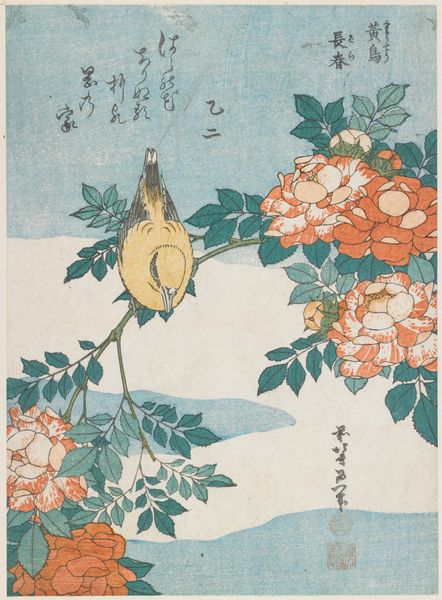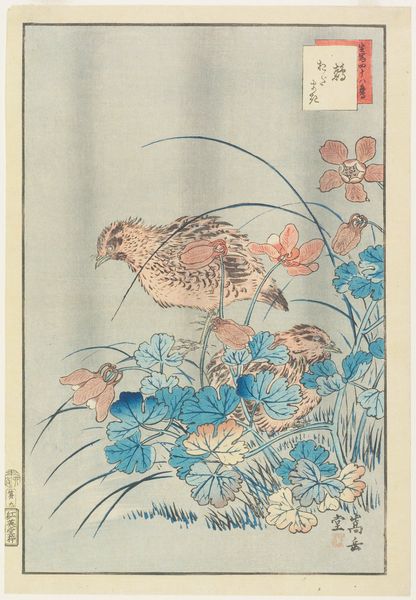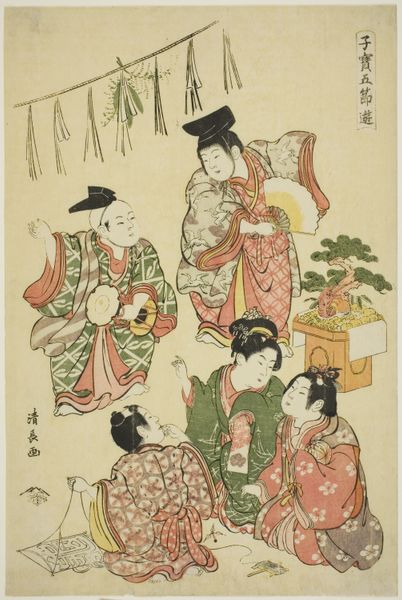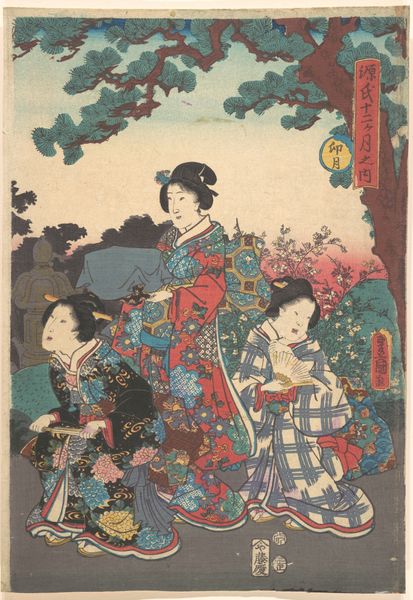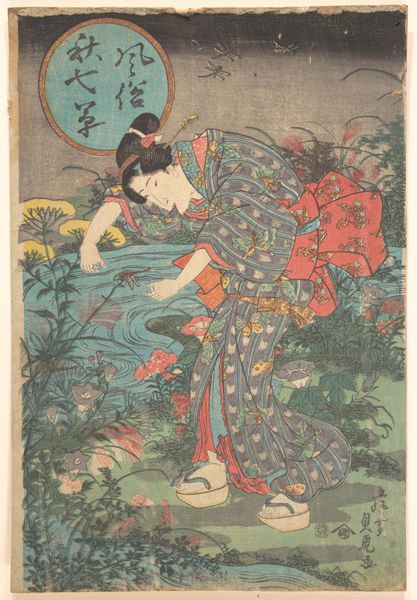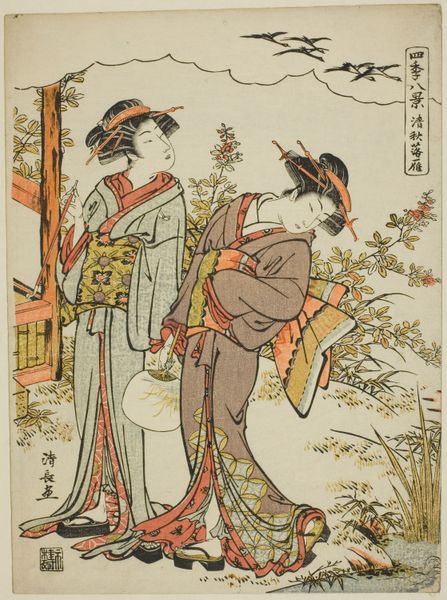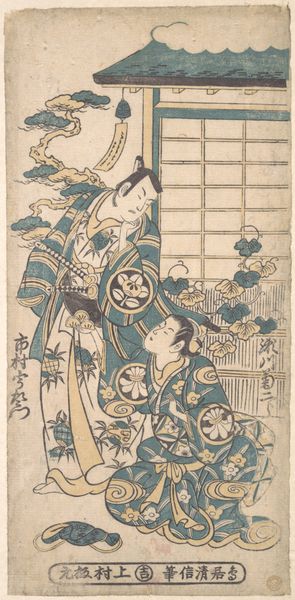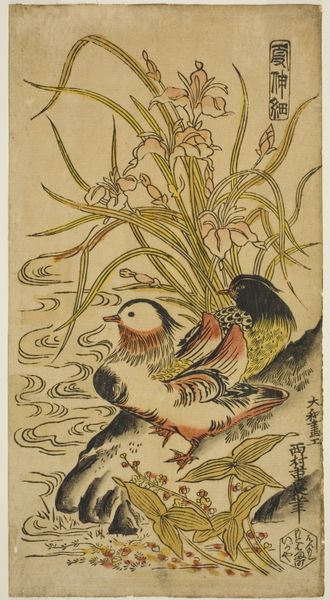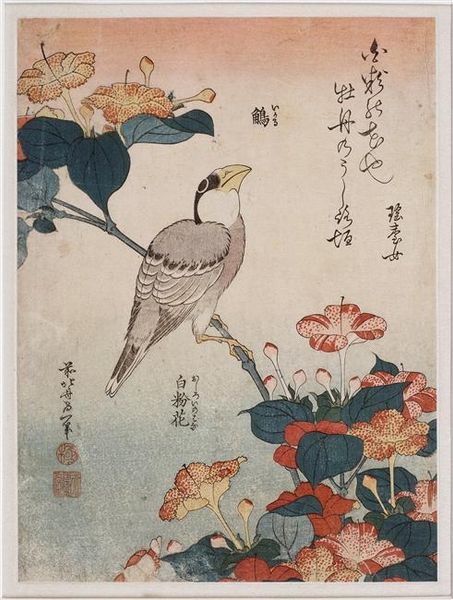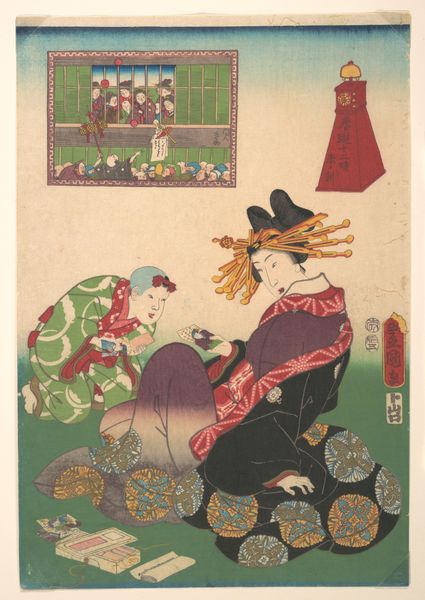
Basketry Work: By the Craftsman Ichida Shōshichirō of Naniwa (Kagozaiku Naniwa saikunin Ichida Shōshichirō) 1819
0:00
0:00
#
narrative-art
# print
#
caricature
#
asian-art
#
ukiyo-e
#
figuration
Dimensions: Image: 13 1/2 × 9 1/2 in. (34.3 × 24.1 cm) Mat: 15 1/2 × 22 3/4 in. (39.4 × 57.8 cm)
Copyright: Public Domain
Editor: Here we have Utagawa Kunisada's "Basketry Work: By the Craftsman Ichida Shōshichirō of Naniwa" from 1819, a Japanese woodblock print. It's playful, almost like a caricature of craftsmanship. What do you make of this interesting collection of creatures and characters? Curator: Well, consider this: Utagawa was working within a vibrant, yet rigidly structured society. This print, on one level, appears as a lighthearted piece of ukiyo-e, but I believe it serves a critical function by playfully subverting social hierarchies and expectations. How does the portrayal of the craftsman, perhaps inflated in importance through visual representation, speak to anxieties or ironies of social mobility at the time? Editor: I see what you mean! It's like the artist is using humor to question power structures. The craftsman as a demon-like figure juxtaposed with those very fashionable cats...it’s intriguing! Are there any contemporary theories that can add to our understanding of these caricatures? Curator: Absolutely. Feminist theory and post-colonial studies can reveal nuanced readings within this artwork. How do the exaggerated forms of the figures, both human and animal, challenge established notions of beauty or idealized representations prevalent in other forms of art at the time? Could the animal figures be interpreted as coded commentaries on social performances or the performativity of class distinctions? Editor: That's a fantastic point. It’s not just a fun print, it’s loaded with social commentary. Now I am thinking about the artist’s role and intent, and how the intended audience might have responded. Curator: Exactly! It’s about sparking dialogue on the underlying socio-political landscape and considering art as an activist medium to reveal hidden power dynamics. Editor: That gives me a lot to think about regarding Utagawa’s practice and the context in which he was working. Curator: Me too! I find this piece far more intricate and layered now, realizing its capacity to incite a deeper understanding of art and society, together.
Comments
No comments
Be the first to comment and join the conversation on the ultimate creative platform.

